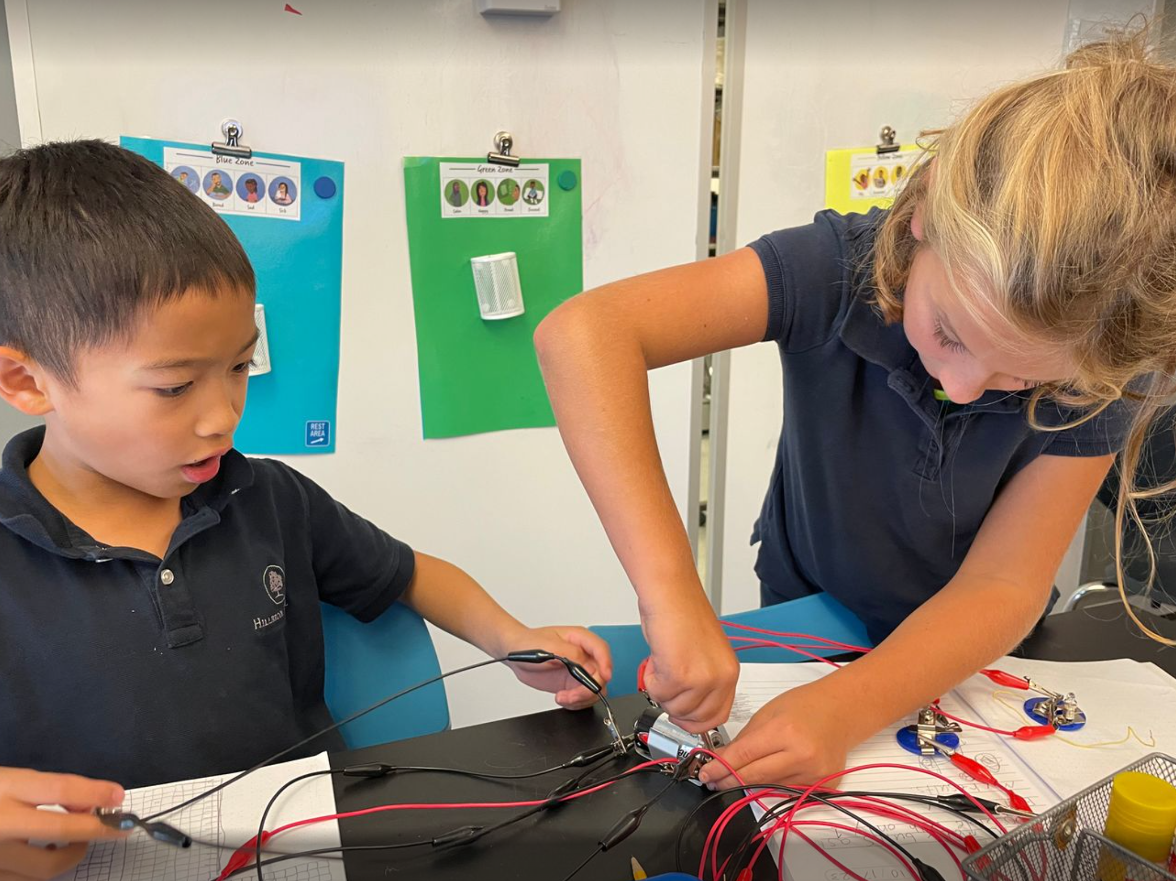“Look! This one is 8 paperclips!”
3rd Grade Scientists built and tested electromagnets this week. Using a 1.5 volt battery, alligator clips, a nail, and wires of varying gauges, students each built a circuit with a wire coiled around their nail, causing it to become magnetic and trying to pick up paperclips.
Was it permanent?
Nope, as soon as we cut off the electricity the paper clips fell.
What could we change to make it work?
Not having success right away created a great opportunity to learn about variables, and for all students to test one change at a time until they had success, or until they could make their electromagnet more powerful. In their notebooks, students diagrammed and labeled their designs. In discussion with their teacher, they connected prior knowledge to make sense of the source of the magnetism, which parts could and couldn’t be swapped out, and how this was similar to other phenomena they have witnessed. “It’s kind of like static! When you get up and your hair is all sticking up because it rubbed on your pillow?”
Students also wondered what else they could try. “I’m thinking it doesn’t have to be a metal material; you could maybe wrap metal around something else [to make an electromagnet]?”
I’m thinking it doesn’t have to be a metal material; you could maybe wrap metal around something else…?
Students also reflected that trouble-shooting this circuit was trickier than in previous circuits they have built: “You can’t see electricity flowing. Like with a lightbulb [in your circuit], you can see it. But in this you can’t see it, so you don’t know when the electricity is going.”
Through inquiries like these, students build hands-on, direct knowledge of how circuits work. They also build the process skills of scientists, observing, testing, documenting and working together to use reason to make sense of their world.

